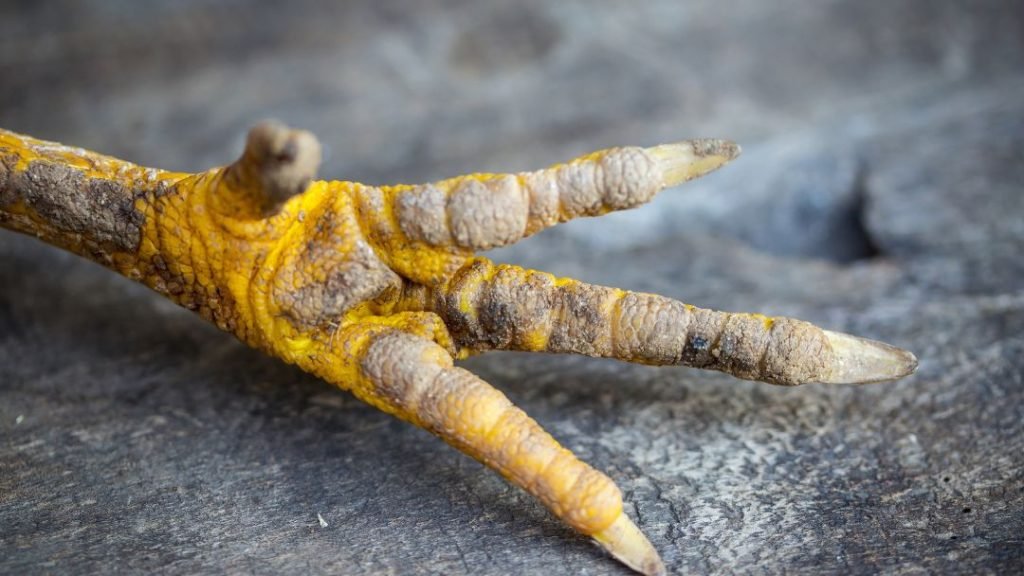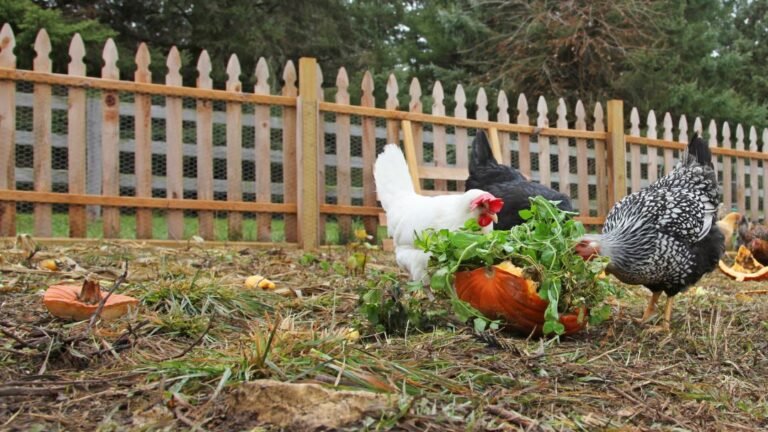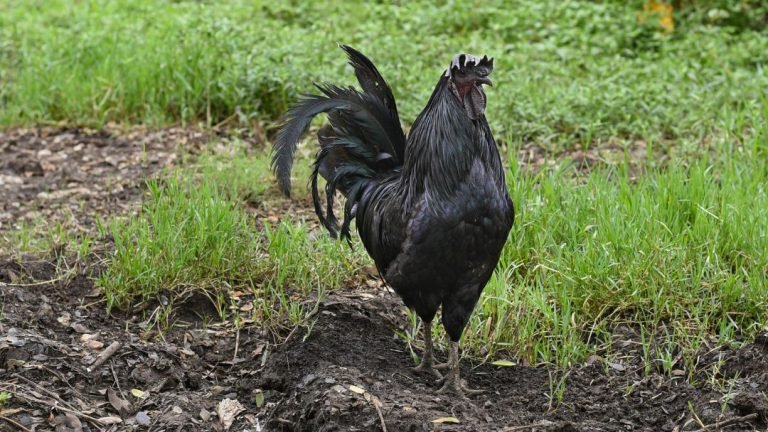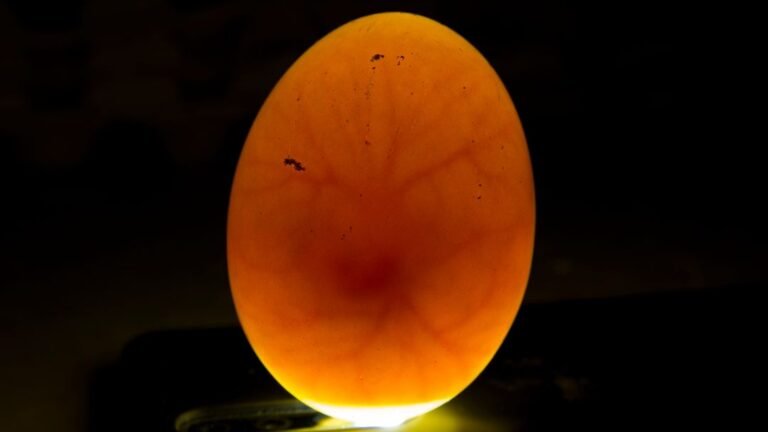Chicken spur removal is a procedure to remove spurs, which are bony growths on the leg of a chicken, preventing injury.
Chicken spurs are bony growths that form on a rooster’s legs. These spurs serve as weapons for fighting and territorial defense. Regular spur removal is essential to prevent injury to other chickens and humans handling them.
Definition And Anatomy Of Chicken Spurs
Chicken spurs, also known as rooster spurs, are bony protrusions that can develop on the legs of adult male chickens. These spurs are located on the back of the lower leg, just above the feet. They typically grow in pairs, with one spur on each leg.
Here is an overview of the definition and anatomy of chicken spurs:
- Composition: Chicken spurs are made up of compact, hard bone tissue.
- Size and Shape: Spurs vary in size and shape depending on the breed and individual chicken. They can measure from a few millimeters to several centimeters in length. Spurs are often curved or pointed.
- Development: Spurs typically start developing when a rooster reaches sexual maturity, which is usually around six to eight months of age. However, their growth may continue throughout the chicken’s life.
- Purpose: In nature, spurs serve as a weapon for male chickens during territorial disputes or mating rituals. They can inflict injury or establish dominance over other roosters.
Hormonal Factors Contributing To Spur Growth
The growth of chicken spurs is primarily influenced by hormonal factors. These hormones stimulate the development and growth of spurs, leading to their unique characteristics. Below are the key hormonal factors contributing to spur growth:
- Testosterone: The male hormone testosterone plays a significant role in the growth of chicken spurs. It is produced by the testes and acts as a stimulant to spur development. Higher levels of testosterone result in more prominent and faster-growing spurs.
- Overall Health: Proper nutrition, good genetics, and overall health contribute to the optimal production and utilization of hormones. A healthy rooster is more likely to have well-developed spurs.
- Age: As roosters mature, their hormonal levels increase, which can enhance spur growth. Younger roosters may have smaller spurs initially, but they tend to grow larger and more prominent as the bird gets older.
- Seasonal Variations: Hormonal fluctuations related to seasonal changes can also affect spur growth. In certain seasons, such as during the breeding season, hormone levels may rise, leading to increased spur growth.
Understanding the definition and anatomy of chicken spurs, as well as the hormonal factors contributing to their growth, helps shed light on the fascinating nature of these bony appendages found in adult male chickens.

Identifying Chicken Spurs In Your Flock
If you’re a chicken owner, it’s important to familiarize yourself with chicken spurs. These small, bony protrusions on a chicken’s leg can sometimes go unnoticed, but understanding them can help you maintain a healthy and happy flock.
In this section, we’ll explore the physical characteristics of chicken spurs and how to differentiate between rooster and hen spurs.
Physical Characteristics Of Chicken Spurs
Chicken spurs have several distinct physical characteristics that can help you identify them in your flock:
- Shape: Chicken spurs typically appear as small, pointed extensions on the back of a chicken’s leg. They can vary in size, with the largest spurs belonging to mature roosters.
- Texture: Spurs are made of hard bone-like tissue and are often smoother near the tip.
- Color: Spurs can range in color from pale ivory to dark brown, depending on the chicken’s breed and individual genetics.
Differentiating Between Rooster And Hen Spurs
Chicken spurs can be found on both roosters and hens, but there are notable differences between the spurs of each gender. Here’s how you can distinguish between the two:
Rooster spurs:
- Size: Rooster spurs tend to be larger and more prominent than those found on hens. They can grow up to several inches long and often curve slightly.
- Thickness: Rooster spurs are generally thicker and sturdier compared to hen spurs.
- Usage: Roosters use their spurs as weapons during territorial disputes or to establish dominance within the flock.
Hen spurs:
- Size: Hen spurs are typically smaller and less pronounced compared to rooster spurs. They may appear as tiny bumps or stubs on the back of the leg.
- Function: Hen spurs serve little to no practical function and are generally non-functional. They are remnants of a chicken’s evolutionary history.
It’s essential to monitor the condition of your chicken’s spurs regularly. Occasionally, spurs can become overgrown or grow in a way that affects a chicken’s mobility and overall well-being. By understanding the physical characteristics of chicken spurs and being able to differentiate between rooster and hen spurs, you’ll be equipped to address any issues that may arise within your flock.
Remember, a healthy flock leads to happy chickens!
Please note that the information provided in this section is intended for educational purposes only and should not replace professional advice from a veterinarian or poultry expert.
Impact Of Spurs On Chicken Health And Behavior
Chicken spur removal can have a significant impact on the health and behavior of chickens. It can help reduce the risk of injuries and aggression among the flock, leading to improved overall well-being.
Spurs on chickens may seem harmless at first glance, but they can have a significant impact on the health and behavior of these feathered creatures. In this section, we will delve into the potential injuries caused by spurs as well as the aggression and dominance behaviors associated with them.
Potential Injuries Caused By Spurs
Spurs, those pointed growths found on the legs of roosters and some hens, may seem small, but they can cause a range of injuries to both the chickens themselves and other flock members. Some potential injuries include:
- Skin punctures and deep wounds: When a chicken with spurs engages in aggressive behavior, they can inflict puncture wounds on the body of other chickens, leading to pain and potential infections.
- Eye injuries: A chicken with long or sharp spurs can accidentally scratch another chicken’s eyes during fights, causing injury and even blindness.
- Leg injuries: Spurred chickens may inadvertently injure themselves or others while engaging in sparring matches. For instance, a powerful leg kick from a spurred rooster can lead to bone fractures or severe bruising.
Aggression And Dominance Behaviors Associated With Spurs
Spurs play a role in the pecking order and social hierarchy of chicken flocks. They can trigger aggressive and dominant behaviors, which can lead to various consequences:
- Fights for dominance: Roosters with spurs often engage in fierce battles to establish their dominance within the flock. These fights can result in injuries and stress for all involved.
- Bullying and aggression: In some cases, chickens with spurs may display aggressive behavior towards other flock members. They may peck, chase, or intimidate other chickens, causing distress and potentially disrupting the overall harmony of the flock.
- Reduced foraging and egg-laying: Chickens that are victims of aggression or constantly on the receiving end of spurs may become anxious and stressed. This can affect their appetite, resulting in reduced foraging activity and a decline in egg production.
Spurs can cause injuries such as puncture wounds, eye injuries, and leg injuries. They can also trigger aggression and dominance behaviors within the flock, leading to fights, bullying, and reduced foraging and egg-laying capabilities. It is essential for chicken owners to be aware of the potential implications of spurs on the overall health and behavior of their feathered companions.
Creating The Optimal Housing Environment
Creating an optimal housing environment for chickens involves effective chicken spur removal to ensure their comfort and safety. Promote healthy living conditions by addressing this issue with proper methods.
When it comes to raising chickens, providing them with a suitable housing environment is crucial for their well-being and productivity. Ensuring adequate space and enrichment, as well as implementing the proper rooster-to-hen ratio, are key factors to consider in creating an ideal setting for your flock.
Let’s delve into these aspects in more detail:
Ensuring Adequate Space And Enrichment
- Provide at least 4 square feet of space per chicken in the coop to allow for comfortable movement.
- Allow access to a spacious outdoor run or free-range area to encourage natural behaviors such as foraging and dust bathing.
- Incorporate perches at different heights, as chickens enjoy roosting off the ground during the night.
- Install nest boxes where hens can lay their eggs privately, promoting a stress-free egg-laying environment.
- Use organic, non-toxic bedding material like straw or wood shavings to create a clean and comfortable living surface.
Implementing Proper Rooster-To-Hen Ratio
- Maintain a rooster-to-hen ratio of approximately 1: 8 to ensure a harmonious flock dynamic.
- Having too many roosters can lead to excessive aggression towards hens and potential injuries.
- A balanced ratio allows the rooster to effectively protect the hens while preventing overcrowding and undue stress.
- In cases where accidents or removal of a rooster are necessary, introducing a new rooster gradually can help minimize flock disturbances.
By adhering to these practices, you are not only creating the optimal housing environment for your chickens but also fostering their physical and psychological well-being. Remember, happy and healthy chickens are more likely to lay consistently and produce high-quality eggs.
Nutritional Considerations For Spur Prevention
Maintaining a balanced diet rich in essential nutrients can help prevent chicken spur formation. By providing proper nutrition, such as calcium, vitamin D, and protein, you can ensure healthy and strong bone growth, reducing the chances of spurs developing.
Balanced Diet For Overall Health
A balanced diet plays a crucial role in maintaining overall health and preventing chicken spur formation. When it comes to nutritional considerations for spur prevention, here are some key points to keep in mind:
- Include a variety of nutrients: Providing your chickens with a diverse range of nutrients is essential for their overall health and well-being. A balanced diet should consist of an appropriate combination of protein, carbohydrates, fats, vitamins, and minerals.
- High-quality protein sources: Protein is important for the growth and development of healthy bones. Include protein-rich foods such as lean meats, fish, eggs, and legumes in the chickens’ diet.
- Essential vitamins and minerals: Certain vitamins and minerals are crucial for promoting bone health in chickens. These include vitamin D, calcium, phosphorus, and magnesium. Ensure that these nutrients are present in sufficient quantities in their diet.
- Fresh fruits and vegetables: Incorporate fresh fruits and vegetables into your chickens’ diet to provide them with additional vitamins, minerals, and antioxidants. Aim for a colorful variety to ensure a wide range of nutrients.
- Avoid excess salt and additives: Minimize the consumption of processed foods that are high in sodium and additives. These can contribute to imbalances and potentially affect bone health.
- Proper hydration: Provide your chickens with access to fresh, clean water at all times. Hydration is important for overall health, including the health of their bones.
Supplements Promoting Healthy Bone Development
In addition to a balanced diet, certain supplements can aid in promoting healthy bone development in chickens. Consider the following:
- Calcium supplements: Calcium is crucial for bone strength and density. Offering calcium supplements in the appropriate dosage can help fulfill their specific requirements.
- Vitamin D supplements: Vitamin D aids in the absorption of calcium, which is essential for healthy bone development. Providing chickens with appropriate amounts of vitamin D can enhance calcium utilization.
- Omega-3 fatty acids: Omega-3 fatty acids contribute to overall bone health and strength. Consider incorporating supplements or foods rich in omega-3 fatty acids, such as flaxseed or fish oil, into their diet.
- Herbal supplements: Some herbs like horsetail, nettle, and comfrey are known for their potential benefits in promoting bone health. Consult with a veterinarian to determine suitable herbal supplements for your chickens.
- Probiotics: Probiotics support healthy digestion and nutrient absorption, potentially enhancing bone health indirectly. Consider adding probiotic supplements designed for chickens to their diet.
Remember, while supplements can be beneficial, it is important to consult with a veterinarian or poultry nutrition expert before introducing any new supplements to your chickens’ diet. A professional can provide guidance based on the specific needs of your chicken flock.
By ensuring a balanced diet and considering appropriate supplements, you can promote healthy bone development in your chickens and reduce the risk of spur formation. Prioritize their nutritional needs to keep them healthy and thriving.
Regular Health Checks And Spur Maintenance
Regular health checks for chickens are crucial for maintaining their overall well-being. One important aspect is spur maintenance, ensuring that these bony growths on their legs are kept in check to prevent any discomfort or injury to the birds.
Grooming And Trimming Spurs Safely
Keeping your chickens’ spurs in check is an essential part of regular health checks. Spurs can grow long and sharp, posing a risk to both the chicken itself and its fellow flock members. By practicing safe grooming and trimming techniques, you can ensure the well-being of your chickens.
Here are some guidelines to follow:
- Inspect the spurs regularly: Take the time to examine your chickens’ spurs on a routine basis. Look for any signs of overgrowth, damage, or infection.
- Prepare the necessary tools: Before starting the grooming process, gather the required equipment. This typically includes a pair of well-maintained clippers or a saw designed specifically for spur trimming.
- Ensure proper restraint: To avoid causing stress or harm to your chicken, it’s crucial to keep it calm and secure during spur trimming. Use a gentle but firm hold or enlist the help of a second person if needed.
- Identify the safe trimming area: Locate the area on the spur that can be safely trimmed without causing discomfort or injury. This area is usually the new growth portion of the spur.
- Trim with care: Using the appropriate tool, trim the spurs carefully. Start with small increments and assess the chicken’s response. Avoid cutting too close to the quick as this can lead to bleeding and pain.
- Apply antiseptic if necessary: In case of any minor injuries during the trimming process, apply a mild antiseptic to prevent infection.
- Monitor for signs of healing: Keep an eye on the trimmed spurs to ensure they heal properly. If you notice any signs of redness, swelling, or continued bleeding, seek veterinary assistance.
- Adjust feed and environmental conditions: Sometimes, overgrown spurs can result from underlying health issues. Review your chickens’ diet and living conditions to ensure they have an optimal environment for overall good health.
- Seek professional help if needed: If you are unsure about trimming spurs or encounter any complications, it is always best to consult with a veterinarian or an experienced poultry farmer. They can provide guidance specific to your chickens’ needs.
- Record the maintenance: Keep a record of when you groom and trim your chickens’ spurs, along with any observations or concerns you may have. This can help identify patterns or potential health issues over time.
Regular grooming and maintenance of spurs are essential for the well-being of your chickens. By ensuring their spurs are at a safe and manageable length, you contribute to a happier and healthier flock. Remember to approach the process calmly and confidently, prioritizing the safety and comfort of your feathered friends.
Non-Surgical Methods For Spur Removal
Non-surgical methods offer effective solutions for chicken spur removal, eliminating the need for traditional surgery. These non-invasive techniques provide a safe and efficient way to address this common issue in poultry farming.
Spurs are bony projections that can form on the bones of chickens’ legs, causing discomfort and potential injury. While surgical intervention may be necessary in severe cases, there are non-surgical methods that can effectively remove or manage spurs. Let’s explore some of these methods below:
Filing Or Grinding Down Spurs
- Mechanical approach: Using a file or a grinding tool, spurs can be gently filed down or ground to reduce their size and alleviate discomfort. This method requires caution and precision to avoid damaging the surrounding tissues.
- Step-by-step process:
- Start by securely restraining the chicken, ensuring its legs are immobilized.
- Use a sterile file or grinding tool to gradually reduce the spurs’ length and thickness.
- Smooth the edges to prevent any potential sharp points that may cause harm to the chicken or other flock members.
- Veterinary advice: It is recommended to consult with a poultry veterinarian or an experienced professional to ensure proper technique and to address any concerns or risks associated with filing or grinding down spurs.
Using caustic agents to dissolve spur growth:
- Chemical approach: Certain caustic agents can be used to dissolve and spur growth over time. These chemicals typically contain an active ingredient that gradually breaks down the bony tissue, reducing spur size and preventing further growth.
- Caution and proper application: It is crucial to follow guidelines and instructions provided by the manufacturer or a poultry health expert when using caustic agents. Improper application or excessive use of these agents can potentially harm the chicken or cause adverse reactions.
- Monitoring and reapplication: Regular monitoring of the spur’s progress and subsequent reapplication of the caustic agent may be necessary to achieve the desired results. Follow the recommended timeline and dosage to ensure optimal and safe treatment.
Remember, these non-surgical methods for spur removal require the careful application of technique and appropriate veterinary guidance. Prioritize the well-being of your chickens by ensuring expert advice and monitoring throughout the entire process. Be patient and persistent, as spur removal can take time and might require repeated actions for successful management.
Surgical Options For Spur Removal
Chicken spur removal can be achieved through surgical options that effectively address the issue. These procedures offer a solution for the removal of spurs, relieving discomfort, and improving the well-being of the chicken.
Seeking Professional Veterinary Assistance
When it comes to addressing chicken spurs, seeking professional veterinary assistance is crucial. Veterinarians have the necessary expertise to assess the severity of the spurs and determine the appropriate course of action. Here are some important points to consider when seeking professional veterinary help:
- Consultation with a veterinarian is essential to accurately diagnose the presence of chicken spurs and evaluate their impact on the bird’s overall health.
- Experienced veterinarians will have a thorough understanding of surgical options, including the benefits and risks associated with each.
- Professional guidance ensures that the procedure is performed safely, minimizing the risk of complications.
- Veterinarians can provide detailed instructions on pre-operative and post-operative care, optimizing the chances of a successful recovery.
- By consulting a veterinarian, chicken owners can receive personalized advice tailored to their particular situation, allowing them to make informed decisions regarding spur removal.
Risks And Considerations For Surgical Removal
When opting for surgical removal of chicken spurs, owners should be aware of the potential risks and considerations involved. Here are the key points to keep in mind:
- Anesthesia: The use of anesthesia is necessary during the surgical intervention. While veterinarians take precautions, there is always a small inherent risk associated with anesthesia.
- Bleeding: Spur removal surgeries carry a risk of bleeding, especially if the spurs are large or deeply embedded. Veterinarians will take measures to control bleeding during the procedure.
- Post-operative pain: Chickens may experience discomfort or pain after surgery. Veterinarians can prescribe appropriate pain management techniques to minimize post-operative discomfort.
- Infection: As with any surgical procedure, there is a risk of infection. Veterinarians will provide guidance on proper wound care and may prescribe antibiotics to reduce infection risk.
- Recovery time and activity restriction: Chicken owners should be prepared for a recovery period post-surgery. Restricting movement and monitoring the bird during this time is essential for optimal healing.
- Individual considerations: Each chicken’s health and age might influence the decision to proceed with surgery. Veterinarians will assess and discuss these individual considerations with the owner.
Considering these risks and consulting a professional veterinarian will help ensure the safest and most successful surgical removal of chicken spurs, promoting the overall well-being of the bird.
Recovery And Aftercare For Spurs Removal
After chicken spur removal, proper recovery and aftercare are essential for healing and preventing complications. Follow a regimen of rest, pain management, and gentle exercises recommended by your healthcare provider to ensure a smooth recovery.
Chicken spur removal is a procedure that can provide relief for chickens suffering from painful spurs. Once the spurs are surgically removed, it is important to focus on the recovery and aftercare process. This section will discuss the measures you can take to promote healing, prevent infection, and monitor any potential complications or regrowth.
Promoting Healing And Preventing Infection
- Keep the area clean: Gently clean the area around the spur removal site with warm water and mild antibacterial soap. Avoid using any harsh chemicals or solutions that could irritate the wound.
- Apply antiseptic ointment: After cleaning the area, apply a thin layer of antiseptic ointment to help prevent infection. This will create a barrier against bacteria and promote healing.
- Keep the chicken comfortable: Provide a clean and comfortable environment for your chicken to recover in. Make sure the coop is well-ventilated and free from excessive heat or cold. Provide clean bedding and ensure they have access to fresh water and nutritious food.
- Maintain proper nutrition: A balanced diet is crucial for the healing process. Ensure your chicken has access to high-quality feed that is rich in essential nutrients. Avoid feeding them anything that could potentially harm the healing process, such as excessive treats or spicy foods.
- Limit activity: While chickens are known for their active nature, it is important to limit their physical activity during the recovery period. This will prevent unnecessary strain on the wound and promote faster healing.
- Monitor for signs of infection: Keep a close eye on the wound site for any signs of infection, such as redness, swelling, or discharge. If you notice any of these symptoms, consult your veterinarian immediately.
Monitoring Any Complications Or Regrowth
- Regularly inspect the spur removal site: Take the time to inspect the spur removal site on a regular basis. Look for any signs of regrowth or abnormal healing. If you notice any concerns, consult your veterinarian for further evaluation.
- Watch for behavioral changes: Monitor your chicken’s behavior closely after the procedure. If you notice any changes in appetite, energy levels, or mobility, it could be a sign of complications. Contact your veterinarian to address any concerns promptly.
- Seek professional guidance: If you encounter any complications or have questions during the recovery process, don’t hesitate to reach out to a veterinarian with experience in poultry care. They will be able to provide guidance and support specific to your chicken’s needs.
By following these recovery and aftercare measures, you can ensure a smooth healing process for your chicken after spur removal. Remember to maintain a clean environment, provide proper nutrition, monitor for complications, and seek professional guidance when needed.
Conclusion
Chicken spur removal is a necessary procedure to ensure the well-being and comfort of your chickens. By removing spurs, you can prevent injuries to both your flock and yourself. It is important to remember that this procedure should be carried out by a professional or an experienced chicken keeper to minimize any pain or stress to the bird.
Regularly inspecting your chickens’ spurs and addressing any overgrowth or sharp edges will help prevent future issues. Remember to provide a safe and comfortable environment for your chickens to minimize the need for spur removal. It is always better to be proactive and take the necessary steps to keep your flock happy and healthy.
With proper care and attention, you can ensure the longevity and quality of life for your chickens. So, don’t hesitate to address any spur-related concerns and give your chickens the best possible care they deserve.





